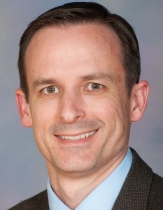
David E. Vaillancourt
My lab is dedicated to understanding Parkinson disease (PD) and movement disorders, to improve patient care in the future. MRI has tremendous potential to provide improved diagnostics and tracking of PD progression, and we are committed to this endeavor.
The current findings are important because they clearly indicate that fiber pathways from the thalamus are affected in early stages of PD. Future studies using computational frameworks can build on this knowledge. If we know where to look to find deficits in early PD, we will be better positioned to determine the markers that can be tracked.
We have also found that the fMRI BOLD signal is affected in the thalamus of early-stage PD. This prior finding, combined with the current findings for diffusion imaging, suggests that PD is already impacting the thalamic structures. It also suggests that treatments are needed earlier in this disease to slow progression.
We have had several researchers interested in the paper because it is one of the first studies to show thalamic structural changes in early PD, and we are currently in the middle of 2 NIH-funded studies examining disease progression and disease classification in PD and other movement disorders. Our goal is to develop markers of change relevant to specific diseases.
We have recently published a paper in Cerebral Cortex. We have also recently presented new findings on essential tremor, PD, atypical Parkinsonism, and control individuals, at the Movement Disorders Society Meeting in Sweden.